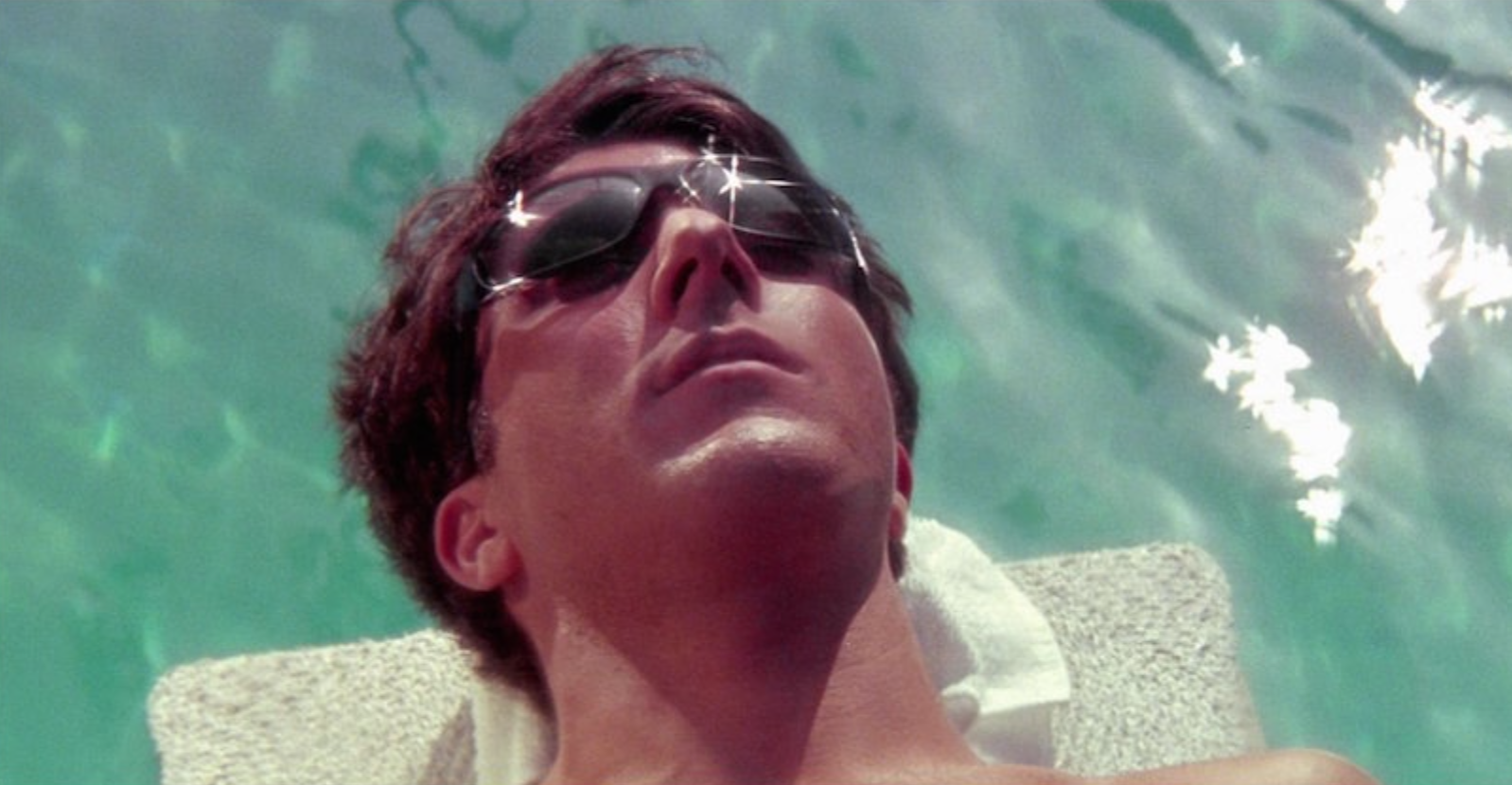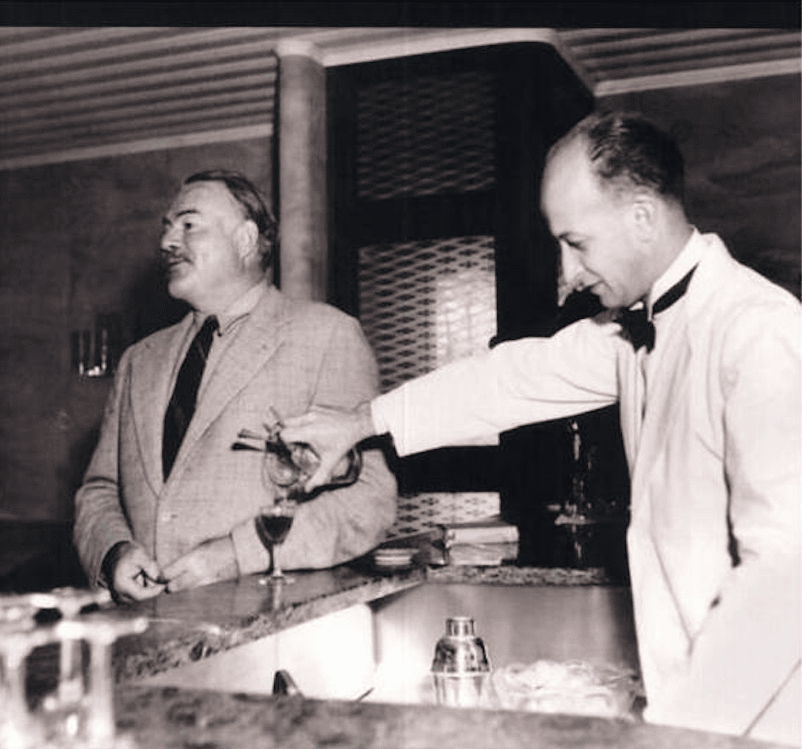“Waitress, I need two more boat drinks.”
--Jimmy Buffett
Memorial Day is quickly disappearing in the rearview mirror as we hit the gas and speed onto the on-ramp that is summer by the pool or at the beach. This can mean only one thing: boat drinks! I’m not sure if Ol’ Jimmy coined the term, but he undoubtedly owned it. When I hear “boat drink,” I envision a warm, but not too hot day, with a clear blue sky; some chill music going; the whir of a blender; and the lazy warmth of a good buzz.

Lying on my raft with my Wayfarers on, staring at the sky above me, pretending I’m Dustin Hoffman in The Graduate, I start pondering a deep, cosmological question: what exactly makes a drink a “boat drink.”
In the eponymous song by Mr. Buffett, he has cabin fever somewhere cold. He’s looking for somewhere warm to escape to. But I think there’s a little more going on here. I think Mr. Jimmy is looking to recharge, but first, he’s got to change—“changes in latitudes, changes in attitudes”.
My floatie taps against the side of the pool and it hits me! (Not the side of the pool!) Sipping on a frozen, alcoholic concoction with friends and nothing to do, is the best way to recharge and redirect. Yeah, redirect—maybe that’s what Buffett was writing about! Ok bear with me—I know I’ve had a few too many boat drinks. I think we need to redirect the boat drink; break it down; distill it; and take it back to its glorious birth! Here are three popular boat drinks that have a much classier pedigree than you or I probably thought possible.
The Margarita (Frozen or On-the-Rocks)
The modern, dayglo green concoction is a mere shadow of the original. Like many well-known cocktails, the origin of the margarita is hazy. Those who have claimed the honor: a Texas socialite named Margarita Sames; the Kentucky Club in Ciudad Juarez, Mexico; and the Tail o' the Cock in Los Angeles. One thing is certain, it was originally never frozen, and it was never made from a mix.
A respectable margarita on the rocks should avoid: (1) cheap tequila, and (2) pre-made mix. Like most classic cocktails, less is more, and better ingredients mean a better drink.
Let’s start with tequila. For most Americans, tequila means Jose Cuervo shots in a college bar on Cinco de Mayo. But there’s so much more than that. Good tequila, in my humble opinion, rivals the best scotch when done right. And when I say “done right,” I mean made with 100% agave. My favorites are Herradura, Patrón, or Corzo. But when it comes to tequila for a frozen margarita, I go with El Jimador, which is a good balance of price and quality.
Tequila was first produced in the 16th century near the present-day city of Tequila, Mexico, though the Aztecs had made a fermented beverage from the agave plant long before the Spanish arrived. And so when the Spanish Conquistadors ran out of booze, they did what any respectful invader would do: go local! They distilled agave to produce what is perhaps the first indigenous North American distilled spirit. It was pure; it was good; it was natural. And then America stepped in and turned it all to crap.
So, to get back to where it all started, here’s a classic, simple, and pure, recipe for a Margarita.
Recipe for the Classic Margarita
Ingredients
2 limes, halved and juiced, rinds reserved
4 oz. premium tequila
1/2 oz. Cointreau or triple sec
Margarita salt or kosher salt
Preparation
Fill two stemmed cocktail glasses with crushed ice and allow to chill. Meanwhile, fill a cocktail shaker with ice and add lime juice, tequila, and Cointreau. Shake well. Empty the ice from the glasses, rub the rims of glasses with the pulp side of one of the lime rinds, then dip moistened rims into a saucer of salt. Strain margaritas into salt-rimmed glasses and garnish with a slice of lime, if you like. This is also easily converted into a frozen version.
The Daiquiri
This drink has always reminded me of that crazy, hot mess ex-girlfriend who you just…can’t…let…go. You know what I’m talking about. Drunken, late-night texts from some bar you can never visit again. She’s with her girlfriends who obviously don’t have the common decency to take her phone away. Yeah, the modern-day daiquiri is a mess. But it wasn’t always so. In the distant past, she was a 1930s movie star, elegant and graceful. Maybe Olivia de Havilland; maybe Greta Garbo; and maybe, just maybe, Marlene Dietrich.
The origins of the daiquiri are just as delitescent as the margarita, but one theory has it being invented by James Cox, an American mining engineer stuck in Cuba at the time of the Spanish–American War. Few folks outside of Cuba had even heard of the drink until Rear Admiral Lucius W. Johnson, a U.S. Navy medical officer, tried Cox's drink. Johnson later brought the drink back to the Army and Navy Club in Washington, D.C., and within a few decades, its popularity soared. Its fame was sealed when Ernest Hemingway and President John F. Kennedy made it one of their favorite cocktails.
If I had to pick a provenance for the daiquiri, this story would be mine because it seems so American—the child of America’s spasmodic rise to world-power status in the early 20th Century. Perhaps it should have been named the “Teddy Roosevelt” or the “Rough Rider.”
Originally the drink was made with a teaspoon of sugar and the juice of one or two limes poured over crushed ice in a tall glass, all finished with two or three ounces of white rum. It was then stirred with a long cocktail spoon until frosted.
I suggest you break up with the hot-mess girlfriend version and move on.
Recipe for the Classic Daiquiri
Ingredients
2 oz. white rum (Mount Gay Eclipse)
1 oz. fresh lime juice
2 bar spoons of sugar syrup
Preparation
Pour all the ingredients into an ice-filled shaker. Stir vigorously with a cocktail spoon and strain into a chilled glass.
Hemingway Daiquiri
 |
Hemingway owns the bar. |
Ernest Hemingway was diabetic, so according to legend, this particular version was devised for him using maraschino liqueur instead of sugar. How this made the drink better suited for a diabetic escapes me. One reason I call B.S. on this story, but here it is nonetheless.
Ingredients
3/4 oz. white rum* (Cruzan Light Aged, Mount Gay Eclipse, or Flor de Caña 4-Year Extra Dry)
1/2 oz. maraschino liqueur
2 bar spoons of grapefruit juice
2 bar spoons of fresh lime juice.
Preparation
Pour all the ingredients into an ice-filled shaker. Stir vigorously with a cocktail spoon and strain into a chilled glass.
Well, there you have three classic drinks to get you through the hot summer months. If these don’t work for you, then grab an ice-cold beer.
*I seriously doubt that Mr. Hemingway, one of the most famous professional drinkers in American literary history, would drink a daiquiri with less rum than the standard version. I would up this to 1-2 oz.
The Piña Colada
This is probably my least favorite of the drinks in this blog post. Can anyone—at least anyone who grew up in the 70s—not take a sip of this drink and immediately start singing, in full-throttle beach mode: “If you like piña coladas/And gettin' caught in the rain”? (If that song is stuck in your head for the next six hours, then “you’re welcome.”)
This cocktail is closely associated with Puerto Rico. In fact, at least according to the internet, in 1978 Puerto Rico proclaimed the cocktail to be its official drink!
According to the earliest origin story, the 19th-century Puerto Rican pirate Roberto Cofresí, in order to boost the morale of his crew, gave them a beverage or cocktail that contained coconut, pineapple, and white rum. If this was the first piña colada recipe then it died with death in 1825.
Fast forward 129 years...
According to its website, The Caribe Hotel claims that Ramón "Monchito" Marrero created the Piña Colada in 1954 at the hotel’s Beachcomber Bar. As further proof that alcohol and politics do in fact mix, Puerto Rican Governor Sila M. Calderón presented a proclamation in 2004 celebrating the drink's 50th anniversary.
And then we have Coco Lopez; Coco López was created in 1954 by University of Puerto Rico Professor Ramon López Irizarry who created an improved method for the extraction of coconut cream.
Classic Piña Colada Recipe from the Caribe Hotel
Ingredients
2 oz white rum (Mount Gay Eclipse)
1 oz coconut cream (such as Coco Lopez)
1 oz heavy cream (optional, for a richer texture)
6 oz fresh pineapple juice (preferably fresh)
1/2 cup crushed ice
Pineapple slice and maraschino cherry for garnish
Preparation:
Combine Ingredients: In a blender, combine the white rum, coconut cream, heavy cream (if using), pineapple juice, and crushed ice.
Blend: Blend the ingredients until smooth and frothy.
Serve: Pour the mixture into a chilled glass, traditionally a hurricane glass.
Garnish: Garnish with a pineapple slice and a maraschino cherry.
Tips:
Coconut Cream vs. Coconut Milk: Make sure to use coconut cream, which is thicker and richer than coconut milk.
Fresh Pineapple Juice: For the best flavor, use fresh pineapple juice. You can juice a fresh pineapple or use a high-quality bottled version.
Blending: Ensure the ice is thoroughly blended to achieve a smooth consistency.
And there you have it. Three popular boat drinks stripped down to their classic selves. So go to it, my friends. As for me, I’m going to gently float to the deep end of the pool. Cheers!





